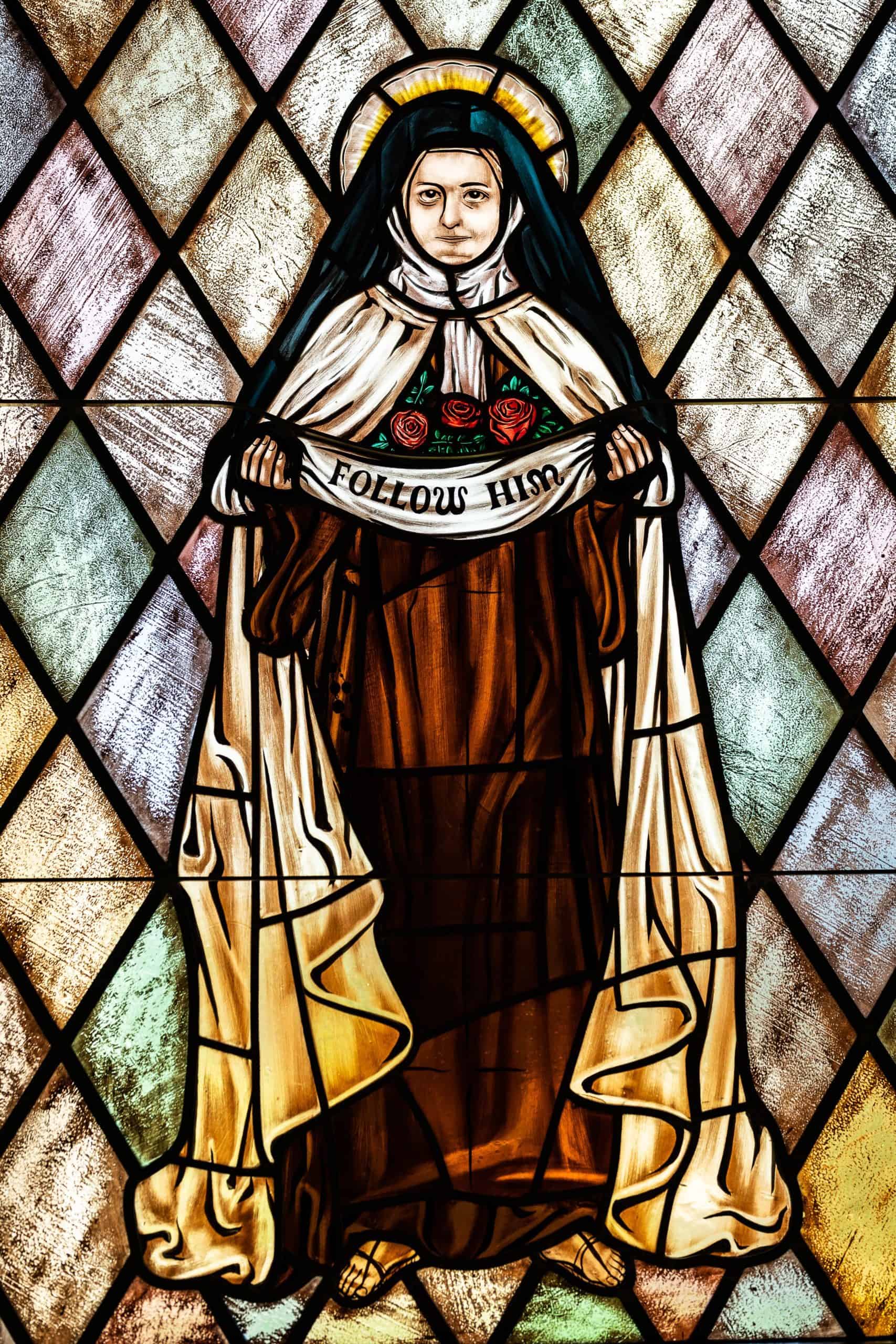St. Therese of Lisieux, affectionately known as “The Little Flower,” is one of the most popular saints of recent memory and beloved by many, myself included. She was born in 1873, the youngest of five daughters to Louis and Zelie Martin (themselves now also saints). Her oldest sister Pauline entered the Carmelite convent in Lisieux when Therese was nine years old, and around that time Therese felt drawn to religious life.
Some time after her second-oldest sister Marie entered the same convent, Therese decided she would also become a Carmelite at the same convent as soon as possible. Her zeal was so strong that shortly before she turned fifteen, while on pilgrimage to Rome, she broke with form during a papal blessing and asked Pope Leo XIII if he would give her permission to enter the convent. Therese had already received permission from her father, but her local bishop had been hesitant to allow her to enter, especially at her early age and because she had two older sisters already in the same convent. 1 The Pope responded, “You will enter if God wills it.”
A few months later, the bishop responded to Therese and gave permission for her to enter in April of the following year. The fifteen-year-old girl would be able to experience what she dreamed of and enter the convent. And so in April of 1888, she became a Carmelite postulant. She learned the basics of religious life over the course of her year of postulancy and her year and a half of novitiate before taking vows.
And while Therese was trying to give herself fully to religious life, she also was aware of difficulties at home. Her sister Celine had delayed her own pursuit of religious life to take care of their ailing father. Therese had been devoted to her father, seeing him like a king from her youth, and it was a moment of great sadness that her father could not be present for Therese’s profession. In fact, her father would last visit the convent when Therese was nineteen. That was the last time they saw each other. He died two years later.
Around that time, Pauline, now the superior of the convent, asked Therese to begin writing down her childhood memories. Amid her work with the other young women in formation, Therese obediently began writing. Within a year, she had written a book’s worth of pages telling the story of her life; she then submitted it to the prioress.
A few months after completing that manuscript, Therese’s health began to take a turn. She began coughing up blood during Holy Week, a sign of tuberculosis. She was only 23. At the same time, the young sister began to experience a crisis of faith. And still she persisted. She was asked to write about her spirituality and to continue her autobiography by the new prioress. Even as her strength began to fade, she continued to write down her story and to be as edifying as she could be. And on September 30, 1897, at the age of 24, Therese passed away.
At first glance, the life of this little Carmelite nun is nothing special. She lived a short life of prayer, and she did no extraordinary works. And yet this is part of her appeal. The writings Therese was commissioned to write were eventually published as Story of a Soul, first released the year after her death.
In the book, we are able to read her firsthand account of her life story. Therese is honest about her shortcomings and failings as well as her great love for and dependence upon Jesus. Moreover, she is forthright in telling the story in her final year of the darkness that she felt in her spiritual life as she approached her death.
But perhaps the most noteworthy phrase of the story is a line written down in the epilogue, where she says “I want to spend my heaven doing good on earth.” People prayed for her intercession, and a stream of miracles were attributed to the young nun. 2
For me, however, the most striking section of the work comes from when Therese describes her spirituality, often referred to as “The Little Way.” To simplify, her spirituality is founded upon doing little things with great love. Therese did not see herself as able to do fantastic things or to be able to make a great difference in the world.
It’s unlikely that any of us will make an enormous change in the world; we lack power or connections. However, that does not mean that we cannot do the little things in life well. There are chores to be done around the house and dozens of other everyday tasks that must be accomplished. What is our attitude towards them? Do we look at them as a burden or an obligation or instead as an opportunity?
This spirituality goes beyond tasks. What about the people we encounter? How can we be kind to them, offering a kind word or doing a small task? When someone asks us for help, do we respond in kindness or begrudgingly? How do we treat the person whose particular ways of eating, talking, or even driving drive us up a wall? It is easy to respond in anger, and God knows I’m as guilty of that as anybody else. But the challenge is to respond in love, in kindness, with compassion. After all, Jesus is present in each person we encounter. Can we respond with that same love like St. Therese did? She is said to have struggled mightily with one sister, but she acted so kindly that the sister thought she was Therese’s favorite.
I found myself so taken with her story that I’ve adopted her as a sort of second patron saint. In some provinces, a Jesuit is allowed to take the name of a saint dear to him at his vows in the same fashion that people take a confirmation saint. Often, the person chooses a Jesuit or the Blessed Virgin Mary, but I was given permission to choose Therese. Why did I ask for her? It’s simple enough. At my best, I live out my Jesuit vocation by caring for the people I encounter according to the Little Way, doing simple acts with great love.


